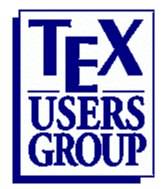Supported Systems
MacTeX is an install package which installs everything needed to use TeX and LaTeX on a Macintosh. It completely configures all programs, so after installation a user can immediately use the software.
|
In 2016, TeX Live for the Macintosh was compiled on Leopard-PPC, Leopard-Intel, and Snow Leopard-Intel. The system then ran on Leopard, Snow Leopard, Lion, Mountain Lion, Mavericks, Yosemite, El Capitan, and Sierra.
Because the GUI programs did not support this range of systems, several versions of each GUI app had to be packaged in the install package. Testing became a nightmare and users on recent systems had to run software compiled on much older machines.
|
After completing that distribution, the members of the MacTeX support team discussed various ways to bring some order to the process. Eventually, we decided to support those versions of OS X for which Apple still provides security patches. Apple supplies security patches for the three most recent versions of OS X. Therefore MacTeX will always support the last three systems when it released each spring. Note that Apple provides free updates to these systems long after a machine is sold, so we are supporting machines sold in the last nine or ten years. We expect MacTeX to contain both Arm and Intel code for at least the next decade.
|
Apple conducts its Worldwide Developer Conference, WWDC, in June, where it gives developers their first beta of the next version of OS X. This version is then released in September. The members of the MacTeX working group test this beta as soon as it is introduced and have always supported it when it is released. Thus in practice we support four versions of macOS throughout most of the year.
|
These rules suggest that we should support Monterey and above in 2024 and drop support for earlier systems. But TeX Live 2024 compiled easily on Mojave, the latest Ghostscript ran on it, and all of our GUI apps support Mojave. Thus we decided to continue supporting Mojave in 2024. So MacTeX-2024 runs on Mojave, Catalina, Big Sur, Monterey, Ventura, and Sonoma for both Intel and Arm, and will support the system released in the fall as well. In the future, we promise support for the last three systems, but will support earlier systems if it requires no additional effort.
|
Although MacTeX requires macOS 10.14 or higher, Mojca Miklavec compiles the binaries x86_64-darwinlegacy on macOS 10.6, Snow Leopard, and they work on that system and higher. TeX Live supports these older versions of macOS as well. There are two ways to install TeX: MacTeX (which installs everything) on macOS 10.14 and above, or a Unix install script (which only installs TeX Live) on all machines with macOS 10.6 or higher. This Unix script will provide our binaries on Mojave and above and the x86_64-darwinlegacy binaries on earlier systems.
|
The difference between using MacTeX to install and using the Unix install script to install is mainly psychological. MacTeX requires a long download; after that, installation is fairly rapid. The Unix install script starts downloading and installing quickly, but takes a long time to download and install over 3700 packages. In a recent test in Oregon, downloading MacTeX took 28 minutes and installing the downloaded package took 10 minutes. On the same day, downloading and installing with the Unix script took 1 hour and 30 minutes.
|



